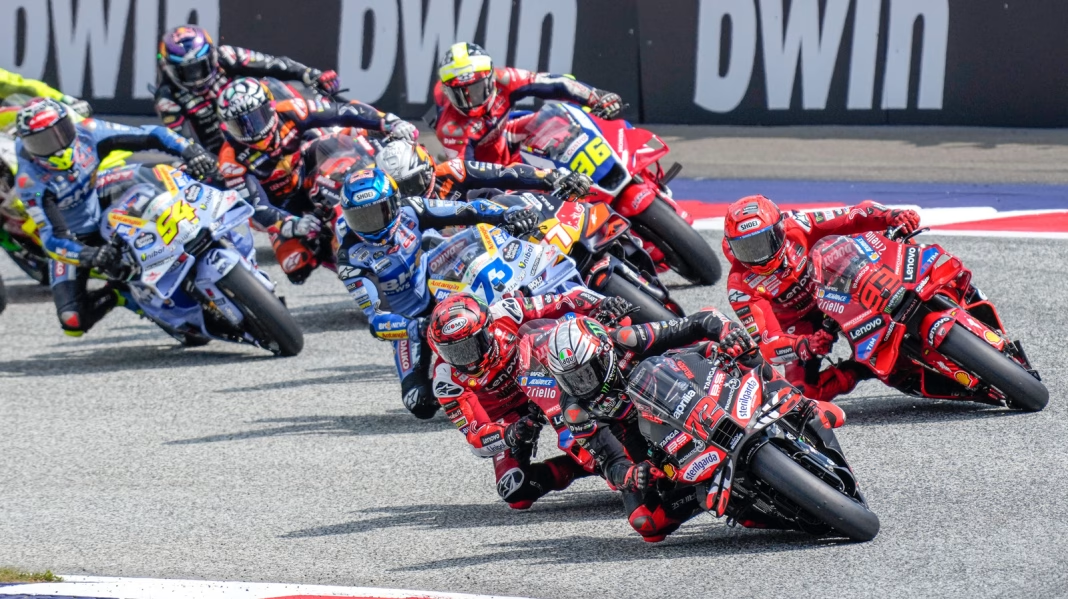Why Do Some MotoGP Engines Spin Backwards?
If you’ve ever watched a MotoGP race and wondered why some bikes sound or behave a little differently, you’re not alone. One of the lesser-known secrets behind those lightning-fast laps is the direction the engine spins. Yes, really—some MotoGP engines actually rotate backwards compared to what you’d find in most street bikes. But why would engineers go to the trouble of flipping things around? Let’s break down the science and strategy behind this fascinating choice.
What Does It Mean for an Engine to Spin Backwards?
First things first: when we say an engine spins backwards, we’re talking about the crankshaft’s direction of rotation. In most motorcycles, the crankshaft spins in the same direction as the wheels. But in some MotoGP bikes, the crankshaft rotates in the opposite direction—what’s called a counter-rotating or reverse-rotating crankshaft.
This isn’t just a quirky design decision. The direction an engine spins can have a big impact on how a bike handles, especially at the limits of traction and speed. It’s a detail that’s invisible to the naked eye, but it can make all the difference between a podium finish and a mid-pack struggle.
How Does Engine Rotation Affect Handling?
Here’s where things get interesting. Every spinning mass in a motorcycle—wheels, crankshaft, even the clutch—creates something called gyroscopic effect. This effect resists changes in direction, which can make a bike feel more stable at high speed but harder to flick quickly from side to side.
Now, imagine the crankshaft spinning in the opposite direction to the wheels. The gyroscopic forces partially cancel each other out. The result? The bike becomes easier to lean into corners and feels more agile during rapid direction changes. That’s a huge advantage on tight, technical tracks where split-second reactions matter.
A 2019 study published in the International Journal of Automotive Technology found that counter-rotating crankshafts can reduce the overall gyroscopic moment by up to 20 percent. That’s not just theory—riders often report that bikes with reverse-rotating engines feel noticeably lighter and more responsive during aggressive cornering.
Why Don’t All Motorcycles Use Reverse-Rotating Crankshafts?
If this setup is so great, why isn’t every motorcycle built this way? The answer comes down to trade-offs. While a reverse-rotating crankshaft improves agility, it can also make a bike feel less stable at very high speeds in a straight line. For everyday riders or touring bikes, stability is usually more important than razor-sharp handling.
There’s also the matter of cost and complexity. Designing an engine to spin backwards requires rethinking the transmission, starter system, and even the way the bike’s electronics interpret engine data. For manufacturers, that means more time and money spent in development. For MotoGP teams chasing every millisecond, it’s worth it. For your average commuter bike? Not so much.
Are There Any Downsides for MotoGP Racers?
Even in the world of MotoGP, nothing comes for free. While the agility boost is a game-changer, some riders have to adapt their style to take full advantage of the different handling characteristics. A reverse-rotating engine can also put extra stress on certain drivetrain components, so teams need to keep a close eye on reliability.
There’s also the question of tire wear. Because the forces acting on the bike change slightly, some teams have reported different patterns of tire degradation. It’s a delicate dance—engineers and riders work together to find the sweet spot between agility and tire longevity.
Which MotoGP Teams Use This Technology?
Not every MotoGP team has adopted reverse-rotating engines, but several of the top contenders have. Ducati was one of the early pioneers, and Yamaha followed suit with its YZR-M1. Honda has experimented with both directions over the years, tweaking their approach based on rider feedback and track conditions.
It’s a classic case of innovation in action. Teams are constantly searching for an edge, and sometimes that means challenging long-held assumptions about how a motorcycle should be built. As of 2023, the majority of factory teams in MotoGP have at least tested reverse-rotating engines, with several making it a permanent part of their race bikes.
What Does This Mean for the Future of Motorcycle Design?
MotoGP has always been a proving ground for new technology. What starts on the track often trickles down to street bikes in some form. While we’re not likely to see every commuter motorcycle sporting a reverse-rotating engine anytime soon, the lessons learned in racing are already influencing high-performance models.
Some premium sport bikes, like the Yamaha R1 and Ducati Panigale V4, have incorporated elements inspired by MotoGP engineering, including crankshaft direction. As materials and manufacturing techniques improve, it’s possible we’ll see more of these innovations make their way to the showroom floor.
The Big Takeaway
MotoGP’s reverse-rotating engines are a perfect example of how small changes can deliver big results. It’s not about chasing perfection—it’s about making smarter adjustments that add up over time. If you’re a rider or just a fan of engineering, keep an eye on how these innovations evolve. Start with one change this week—maybe it’s tweaking your riding position or learning more about your own bike’s quirks—and you’ll likely spot the difference by month’s end.


